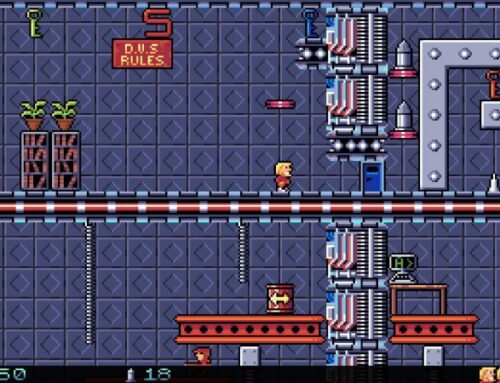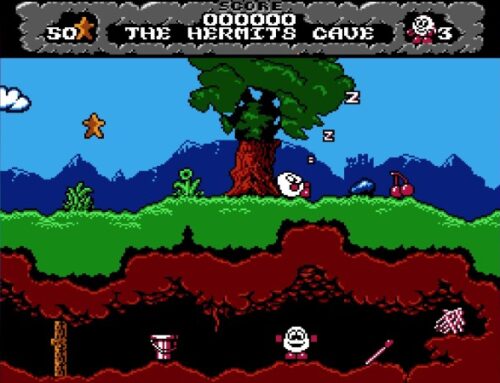Regular readers will hopefully know me by now; I’m someone who is generally willing to give even games with the absolute worst reputation a chance to shine. And in a surprising number of cases, I’ve found things to love in games that are supposedly “the worst” in their respective genre. So when I saw Capstone Software’s Operation Body Count on GOG.com, accompanied by a series of user reviews about how terrible it supposedly is, I took it as a challenge.
This, supposedly, is one of the worst old-school “boomer” shooters of all time. But is it really that bad? £3.39 seemed like a small price to pay to find out — and if nothing else I would hopefully get an interesting article out of it, at least. So here we are.

Within a few moments of starting — after I’d spent a good fifteen minutes faffing around to get the sound to work, that is — I felt like I already had my answer. And it was not looking like a positive outcome for Operation Body Count. But I thought I’d persist and see if things got better.
Operation Body Count came out in 1994, and it was one of several releases from Capstone Software to make use of a modified version of the Wolfenstein 3D engine. Since Doom had already come out at the end of 1993, this meant that Operation Body Count and its peers immediately looked dated — but that didn’t necessarily mean that they’d be bad games.
Of course, Operation Body Count’s atrocious performance — when playing on modern machines, you’ll need to crank DOSBOX’s cycles setting up to max to get it anywhere vaguely close to playable — plays a significant role in it being a bad game, but even games that run like a limping dog can sometimes have a few redeeming features. So let’s take a moment to look at what Operation Body Count actually does, and whether or not it actually does have anything about it that makes it worth even a brief look.

In Operation Body Count, you take on the role of a member of a special government assault team who are attempting to extract a band of terrorists from the 40-floor United Nations building. Rather than going in for a rooftop assault, you have instead been sent into the sewers beneath the building — and believe me, you’ll be in there for quite a while, since it’s a good 5 levels before you see even a hint of anything other than poo-stained walls and giant rats.
There are five different weapons available for you to use. Unlike many other first-person shooters of the time, Operation Body Count eschews a basic melee weapon in favour of the world’s weediest shotgun as your “last resort” armament. This at least allows you to attack from range — and it has infinite ammo, too — but the gun’s excruciatingly slow fire rate means you’d do best not to rely on it too much.
You start the game with an Uzi that has a pitifully small amount of ammunition in it, and an apparent inability to fire in a fully automatic manner. As you progress through the game, you’ll get your hands on a slightly better machine gun, a flame thrower and a rocket launcher; the latter two are genuinely entertaining to use, so long as you remembered to crank up that cycles setting, as their use has quite the impact on the game’s frame rate!

The rocket launcher in particular is noteworthy for its ability to actually blow the textures off the game’s walls and reveal bare rock underneath; in an admirable number of areas, you can even actually blow up walls and obstacles altogether and reveal (or create) new passageways to hidden treasure and bonuses. This is a nice evolution of the Wolfenstein 3D formula; there were all too many situations in that game where a well-placed explosive would have probably made navigation a whole lot easier.
The game has a solid and interestingly implemented automap, too. Rather than requiring you to visit each part of the level to map it all out, the whole map is available to you immediately — but you can only see the area immediately around you. The area that this covers is generally enough to give you an idea of where you might want to go next without causing you to rely exclusively on it, and it works well as a means of helping you find your way around the levels.
This is good, because the texture work in Operation Body Count is bland, boring and exceedingly repetitive — particularly in its opening sewer levels, which become exceedingly dull to plod your way through after not very long at all. Things improve a bit once you actually get into the building you’re supposed to be assaulting — but with 40 floors in total to make your way through, you’re going to get very tired of this game well before it’s over.

Dull enemy design doesn’t help, either; the first few levels are populated by little other than giant rats punctuated by occasional inexplicable giant green slime monsters — I thought this was supposed to be a military-style shooter? — and once you get into the building itself, the terrorists who assault you are singularly uninteresting to encounter, with all providing slight variations on what you’d get if you asked a bored and possibly slightly prejudiced artist in 1993 to draw what they thought “a terrorist” looked like.
Ultimately, Operation Body Count just doesn’t really do anything particularly interesting, and that’s the main thing that damns it. There’s no sense of unfolding narrative to speak of, the levels are bland and dull both in terms of their texture work and map design, and five weapons isn’t really enough to drip-feed to the player over the course of 40 levels and keep things interesting.
There’s a good attempt been made at creating a sense of atmosphere with variable light levels and some faintly unsettling Redbook CD audio music, but ultimately this is a textbook example of a “me too” shooter from the early ’90s coming out far too late to ever stand a chance against the juggernaut that was Doom.

Is it one of the worst boomer shooters ever? Yes, I think it actually, genuinely might be. This is not to say that it’s fundamentally completely broken or totally unplayable, mind — so long as you play it either on a retro PC that is powerful enough to get it running at a sensible frame rate, or crank those DOSBOX cycles up — but rather that there’s just nothing interesting that makes this game stand out among its numerous imitators.
It doesn’t have a cheese factor for some “so bad it’s good” appeal — although the game’s villain screeching “YOU LOSE!” at you on every Game Over is quite entertaining — and the few interesting features it does have, such as the aforementioned rocket launcher and automap, aren’t enough to set it apart from the many other much more well-implemented games that were around at the time.
With that in mind, I can’t in good conscience recommend it to anyone other than those who have absolutely positively definitely exhausted all the possibilities of every other boomer shooter out there. And I suspect, given the popularity of modding many of these games, even decades after their release, precisely no-one in the entire gaming world is in that situation.




